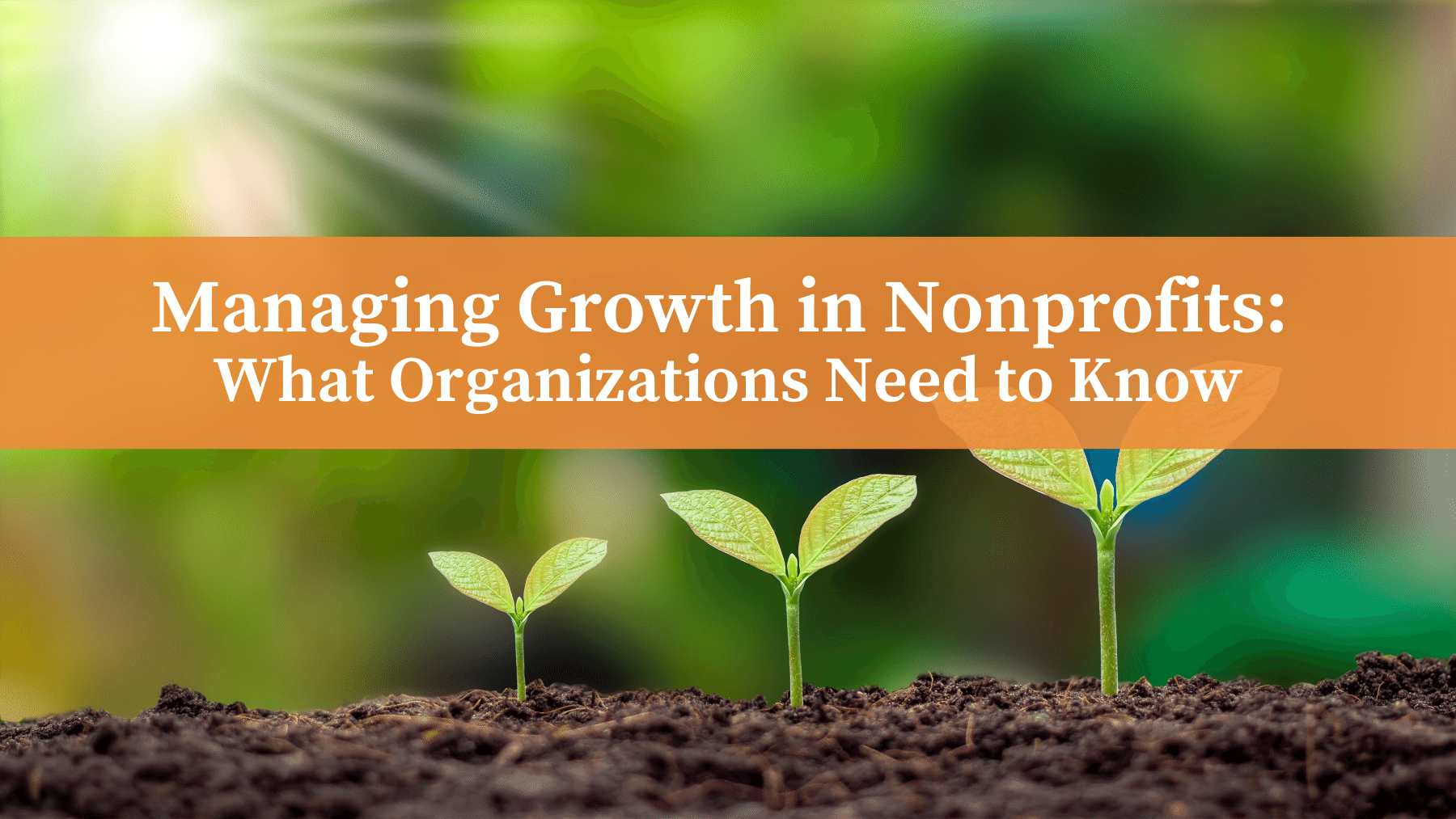
It’s been observed that the most difficult concept for a fish to understand may be that of water itself. In other words, it’s often difficult to see your organization with enough perspective to truly understand the environment that surrounds and defines you.
While a lack of self-awareness can be limiting for an individual, for an organization, it can be much more significant — and even stand in the way of growth. In this post, we’ll look at four key areas in which gaining additional insight can make a measurable difference in managing growth in nonprofits.
1. Know your revenue situation and tools
Some of the most commonly tracked metrics for managing growth in nonprofits include new members, total dues and non-dues revenue, and renewal rates. Non-dues revenue metrics could include sales of any intellectual property your organization creates, such as industry trend reports, benchmarking studies, and custom interactive dashboards.
Fortunately, association management systems (AMS), and accounting systems more broadly, are designed specifically to offer insights into tracked metrics and various revenue streams. If you’re not getting the insights you feel you need, consult with your accounting team to identify ways to improve the information you’re receiving.
2. Know your members and their needs
Insight into members and their needs is perhaps the most essential piece of knowledge a member organization can have. But what you know about your members can change over time. For example, what mattered most to your members in 2019 may bear little resemblance to what they care about most as their businesses continue to emerge from the pandemic and associated economic downturn. A good strategy is to update your findings regularly.
It’s also important to understand not only what services your members want from your organization, but also how and when they prefer to engage with your organization. Insights into the types of involvement members prefer, and at what age or career points they engage with you, can help you finetune your membership and engagement lifecycle, so that you can remain relevant to members throughout their careers. In addition, there are often meaningful differences in needs between members of one generation and the next, regardless of where an individual may be in their own career.
Last but not least, managing growth in nonprofits relies on having an accurate understanding of how your organization is perceived by both members and non-members. If you haven’t conducted research into such perceptions recently, you may be unaware of changes that could affect your ability to attract and retain members.
3. Your competitive landscape
For some association professionals, it may seem odd to think about their organization as having competition. But even if you’re the only association serving professionals in your given field, those professionals still have other options. With the broad success of platforms such as LinkedIn, members may be able to create their own professional network. Still others may find that subscribing to key industry publications, user groups, or news feeds can keep them in touch with important trends and issues.
For this reason, conducting competitive analyses, focus groups, and surveys can help you understand where your organization fits as an option for members — and how to convey your unique value proposition to both members and non-members.
4. Your internal processes and efficiencies — and where they can be improved
At a fundamental level, your organization’s growth depends on continually improving core processes — beginning with any functions that constitute a “touch” experienced by your members. It pays to periodically review processes for any disconnects or bottlenecks, and address them before they become issues that affect members’ experience when interacting with you.
Improving efficiencies in this way can help your organization significantly reduce error, waste and rework. In addition, it can help free up time for staff, and allow them to do what they do best in responding to member needs and moving the organization’s mission forward. Therefore, at a minimum you need to review any areas where you’re experiencing problems, and look for technology or other solutions that can help you generate better results.
The stakes are high — so start addressing your knowledge gaps today
By recognizing any areas where your organization’s knowledge comes up short, and acting to gather the missing information, you can make better decisions on behalf of your members and create a better value proposition. At a time when your members may be reevaluating every expense, including their membership fees, following these recommendations can mean the difference between just hanging on, or growing steadily.
For more information and insight about growing your nonprofit, feel free to contact Vault Consulting.



